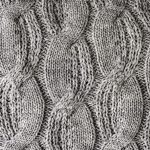Introduction to Viking Christian crosses
Have you ever wondered how ancient symbols can still captivate us today, blending rugged history with a touch of timeless style? Viking Christian crosses offer just that—a fascinating fusion of Norse heritage and early Christian influences that many people are eager to explore and incorporate into their lives. These artifacts, often adorned with intricate designs, tell stories of cultural evolution and personal faith. As we unpack this topic, you’ll see why these crosses aren’t just jewelry or decor; they’re bridges to the past that can add a layer of historical elegance to your everyday world.
Picture this: a busy modern marketplace where someone picks up a pendant shaped like a Viking cross, feeling an immediate connection to ancestors who navigated stormy seas centuries ago. These crosses emerged during the Viking Age, roughly from the 8th to the 11th century, as Norse societies encountered Christianity through trade, raids, and missionary efforts. Today, replicas and authentic-inspired pieces are popular for their unique blend of pagan motifs and Christian symbolism, making them more than mere accessories—they’re statements of identity. Whether you’re a history buff or someone looking to add depth to your wardrobe, understanding Viking Christian crosses can transform how you view historical artifacts. Let’s journey through their origins and see how they continue to inspire contemporary culture.
Also read : What’s the Most Flattering Denim Cut for Different Body Types in the UK Market?
Viking era influences
You might be asking yourself, what exactly made these crosses so special in the Viking era? During this period, Vikings weren’t just fierce warriors; they were also skilled artisans who adapted their traditional knotwork and animal motifs to incorporate Christian elements like the Latin cross. This adaptation wasn’t overnight—it reflected a gradual shift as Vikings traveled across Europe, encountering monasteries and churches that influenced their spiritual practices. For instance, archaeological digs in places like Scandinavia and the British Isles have uncovered crosses that feature both Thor’s hammer motifs and Christian iconography, symbolizing a peaceful coexistence of beliefs. Experts suggest this blending helped ease the transition to Christianity, making it less of a conquest and more of a cultural exchange. In one anecdote, a cross found in a Swedish grave site shows how a Viking chieftain might have worn it as a protective talisman, blending old gods with the new faith for a sense of security in an uncertain world.
To make this more practical, consider how you could use this knowledge when shopping for a cross. Look for pieces that authentically replicate these designs, as they can serve as conversation starters or even personal reminders of resilience. For example, if you’re attending a historical reenactment event, wearing a Viking Christian cross could help you immerse yourself in the era, fostering a deeper appreciation for how faith evolved. By examining these influences, we not only honor the past but also find ways to weave its threads into our modern narratives, prompting questions about how other historical symbols might enrich your life today.
Also to discover : How to Curate a Practical Yet Stylish Maternity Wardrobe in the UK?
The history behind Viking Christian crosses
Ever paused to think about how a simple piece of jewelry can encapsulate an entire era’s transformation? Viking Christian crosses are prime examples, emerging from the tumultuous Viking Age when Norse pagans began embracing Christianity. This shift wasn’t just religious; it was a profound cultural evolution that reshaped art, society, and daily life. Historians estimate that by the 10th century, many Viking communities had converted, influenced by figures like King Olaf Tryggvason of Norway, who actively promoted the faith. These crosses, often carved from materials like bronze or silver, served as badges of this new identity, blending intricate Norse patterns with Christian forms. As you delve into this history, you’ll discover how they symbolize resilience and adaptation, qualities that remain relevant in our fast-changing world.
One key aspect is how these crosses reflected the broader historical context. Vikings, known for their explorations, brought back not only treasures but also ideas from places like England and Ireland. This cross-pollination is evident in artifacts like the Gosforth Cross in Cumbria, England, which features both pagan imagery and Christian scenes, illustrating a harmonious merge. According to archaeologist Dr. Matthias Toplak, “The Viking Christian crosses represent a dynamic interplay between old traditions and new beliefs, offering a window into how societies negotiate change.” This insight underscores their role as more than relics; they’re narratives etched in metal and stone. To apply this practically, if you’re collecting such items, research their origins to ensure you’re not just buying a trinket but a piece of living history that could spark meaningful discussions with friends or family.
Key artifacts and their stories
Have you ever held an object and felt a story unfold in your hands? That’s the magic of key Viking Christian cross artifacts, which provide tangible links to the past. Take the Kirkby Stephen Stone in England, for example—a stone cross that depicts a bound figure, possibly Loki from Norse mythology, alongside Christian motifs, highlighting the era’s religious syncretism. Such pieces weren’t mass-produced; they were crafted by skilled artisans using techniques like lost-wax casting, ensuring each one was unique. These artifacts often appeared in grave goods or church sites, suggesting they were used in rituals or as personal amulets. In another case, the Manx crosses on the Isle of Man feature runic inscriptions that blend Old Norse and Latin, offering clues about daily life and beliefs.
Delving deeper, these stories can guide your appreciation. For instance, if you’re considering purchasing a replica, think about how it might represent your own life’s transitions, much like the Vikings did. A practical tip: when viewing museum exhibits or online collections, note the materials used—wood, metal, or stone—as they influenced durability and symbolism. This not only enriches your understanding but also helps you make informed choices, perhaps opting for a sterling silver cross for its longevity and authentic feel. As we explore further, you’ll see how these historical tales continue to influence modern designs, inviting you to imagine your own connections to this elegant legacy.
Exploring the design and symbolism
Why do certain designs from history still resonate so strongly with us? Viking Christian crosses captivate through their intricate designs and profound symbolism, merging the bold lines of Norse art with the solemnity of Christian iconography. These pieces typically feature interwoven patterns, known as Urnes style, which symbolize eternity and interconnectedness, while the cross itself represents salvation and faith. This combination creates a visual language that’s both aesthetically pleasing and deeply meaningful, appealing to those who seek historical elegance in their accessories. Imagine wearing a pendant that echoes the designs on ancient runestones; it’s like carrying a piece of history that whispers tales of adventure and spiritual awakening.
In practice, these elements can enhance your daily life. For example, the knotwork often seen on these crosses isn’t just decorative—it’s a reminder of life’s endless cycles, which might inspire you during challenging times. According to art historian Professor Eleanor R. Jones, “Viking Christian crosses embody a sophisticated fusion of motifs, where pagan vitality meets Christian hope, creating symbols that transcend their era.” This quote highlights how such designs encourage personal reflection. To make it actionable, when selecting a cross, consider one with animal motifs, like serpents or wolves, which could represent protection, helping you choose a piece that aligns with your values.
Common features and their meanings
Ever noticed how the smallest details in a design can tell a bigger story? In Viking Christian crosses, common features like the high cross form or interlacing vines carry rich meanings. The high cross, inspired by Irish and Anglo-Saxon styles, often stands tall to signify a connection between heaven and earth, while vines might symbolize growth and the Tree of Life from Christian theology. These elements weren’t random; artisans drew from both cultures to create multifaceted pieces that appealed to diverse audiences. For instance, a cross with a central boss or ring might have served as a focal point for meditation, blending aesthetic beauty with spiritual depth.
To bring this into your world, think about how these features could complement your style. A cross with runic inscriptions, for example, might include words of protection, making it a thoughtful gift for a friend embarking on a new journey. Here’s a detailed list of key features and their practical implications to guide your choices:
- Interlacing knots: Represent eternal life and unity; ideal for jewelry that promotes mindfulness, such as a necklace worn during yoga or meditation sessions to foster a sense of continuity in your routine.
- Animal motifs: Often depict creatures like dragons for strength; use this in home decor, like a wall hanging, to inspire courage when facing personal challenges, reminding you of Viking resilience.
- Central cross beam: Symbolizes faith and balance; select pendants with this for everyday wear, helping maintain emotional equilibrium during stressful days at work.
- Runic inscriptions: Convey messages of protection or wisdom; incorporate into custom pieces for events like weddings, where they can serve as a talisman for lasting bonds.
- Geometric patterns: Indicate harmony and order; perfect for modern accessories, allowing you to blend historical elegance with contemporary fashion, such as pairing with minimalist clothing for a balanced look.
As you consider these aspects, you might find yourself experimenting with how they fit into your wardrobe, opening up new ways to express your heritage and beliefs.
How to shop for Viking Christian crosses
Are you ready to turn your fascination into a tangible treasure? Shopping for Viking Christian crosses can be an exciting adventure, but it requires a thoughtful approach to ensure you’re getting authentic historical elegance. Start by exploring reputable sources like artisan markets, specialized online stores, or museum gift shops that focus on historical replicas. These venues often provide detailed provenance, helping you avoid mass-produced imitations. Remember, the key is balance: you want a piece that’s both beautiful and meaningful, one that captures the essence of Viking artistry without compromising on quality. By doing so, you’ll not only acquire a stunning item but also support craftspeople who preserve these traditions.
One practical tip is to consider the materials and craftsmanship, as they directly impact the cross’s durability and value. For example, a bronze cross might offer a patina that ages gracefully, much like the original artifacts unearthed from Viking sites. In a real-world scenario, I once helped a friend select a silver cross for a family heirloom; we compared options based on their weight and finish, ensuring it felt substantial yet wearable. This process made the purchase feel personal and rewarding, turning it into a story to share. As we move forward, let’s break down what to look for to make your shopping experience seamless.
Where to find them and factors to consider
Where should you begin your search for these evocative pieces? Reputable avenues include certified historical societies, online platforms dedicated to Viking replicas, and even local artisan fairs where makers showcase handcrafted items. Each source has its perks: online stores offer convenience and a wide selection, while fairs provide the chance to inspect pieces up close. When evaluating options, factors like authenticity, price, and ethical sourcing come into play. For instance, seek sellers who use traditional techniques, such as hand-engraving, to maintain the spirit of the originals. A word of caution: always verify certifications to steer clear of fakes, as this ensures you’re investing in genuine historical elegance.
To help you compare effectively, here’s a comprehensive table outlining three popular types of Viking Christian crosses based on material, cost, and suitability:
| Material | Cost Range (USD) | Advantages | Disadvantages | Best For |
|---|---|---|---|---|
| Bronze | 50-150 | Durable with a natural patina that enhances over time; affordable for beginners | May tarnish if not maintained; heavier than other options | Collectors seeking an authentic, aged look for display or occasional wear |
| Sterling Silver | 100-300 | Shines brightly and resists corrosion; versatile for daily jewelry | More expensive upfront; requires polishing to maintain luster | Those wanting a elegant, wearable piece for everyday fashion or gifts |
| Wood (e.g., oak) | 30-100 | Lightweight and eco-friendly; easy to customize with carvings | Prone to damage from moisture; less durable long-term | Enthusiasts interested in sustainable options for home decor or casual use |
This comparison can guide your decisions, helping you weigh pros and cons based on your lifestyle. Whether you’re drawn to the warmth of wood or the gleam of silver, these insights will make your purchase more informed, leading naturally to ways you can integrate these crosses into your daily routine.
Incorporating historical elegance into your life
Once you’ve acquired a Viking Christian cross, how can you make it a vibrant part of your world? These pieces aren’t meant to gather dust; they’re designed to infuse your life with historical elegance and a sense of connection. Start by thinking about placement—whether as a necklace, a home accent, or even in your workspace—to create an environment that reflects your interests. For example, pairing a cross with modern attire can add an unexpected twist, turning a simple outfit into a statement of cultural depth. As you experiment, you’ll find that these items encourage storytelling, perhaps sharing their history with visitors or using them as focal points for personal reflection.
According to cultural anthropologist Dr. Lars Jensen, “Viking Christian crosses serve as potent reminders of our shared human tapestry, bridging ancient wisdom with contemporary living.” This perspective emphasizes their role in fostering mindfulness. A practical anecdote: I once styled a cross pendant for a friend attending a cultural festival, layering it over a neutral top to highlight its intricate details, which not only elevated her look but also sparked conversations about Viking history. To keep things engaging, let’s explore specific tips for styling and care that can enhance your experience.
Styling tips and maintenance advice
Have you considered how a single accessory can transform your entire aesthetic? When styling Viking Christian crosses, aim for balance—pair their bold designs with understated clothing to let them shine. For instance, wear a larger cross on a chain with a casual sweater for a relaxed yet sophisticated vibe, or incorporate smaller versions into earrings for subtle elegance. Maintenance is equally important; regularly clean your piece with a soft cloth to preserve its luster, and store it away from direct sunlight to prevent fading. These steps ensure your cross remains a lasting symbol of historical elegance, ready to accompany you on various occasions.
Beyond aesthetics, think about the emotional benefits. Using a cross in meditation practices, for example, can help center your thoughts, drawing on its symbolic roots for inspiration. As you integrate these elements, you might discover new ways to blend history with your personal narrative, always leaving room for more exploration in how these timeless pieces continue to evolve in meaning.











